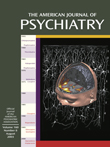Proton Magnetic Resonance Spectroscopy of Bipolar Disorder Versus Intermittent Explosive Disorder in Children and Adolescents
Abstract
OBJECTIVE: The diagnosis of bipolar disorder in juveniles is controversial. This study was designed to compare proton magnetic resonance spectroscopy (1H MRS) in patients with bipolar disorder or intermittent explosive disorder, two groups with symptomatic overlap but categorical distinction. Children with intermittent explosive disorder designate patients whose illness clinically resembles pediatric bipolar disorder but does not satisfy DSM-IV criteria for mania. Based on the authors’ previous report of higher levels of 1H MRS cingulate myo-inositol/creatine in youngsters with bipolar disorder than in normal comparison subjects, they hypothesized that patients with bipolar disorder would have higher cingulate myo-inositol/creatine-phosphocreatine measurements than patients with intermittent explosive disorder and normal comparison subjects. METHOD: Myo-inositol levels were measured with a 2×2×2 cm3 voxel placed in the anterior cingulate for acquisition of 1H MRS in 10 patients with bipolar disorder, 10 patients with intermittent explosive disorder, and 13 normal comparison subjects. N-Acetylaspartate, choline moieties, creatine-phosphocreatine, and glutamate-glutamine metabolite levels were also measured. RESULTS: The patients with bipolar disorder showed significantly higher anterior cingulate myo-inositol/creatine-phosphocreatine and myo-inositol (mmol/liter) levels than the patients with intermittent explosive disorder and the normal comparison subjects. No significant differences were found across groups for myo-inositol or other metabolites in the occipital cortex. CONCLUSIONS: These data provide evidence that differences in the concentration of myo-inositol (mmol/liter) in the anterior cingulate cortex in 1H MRS may differentiate these two populations. Follow-up studies involving larger samples may conclusively estimate the biological specificity between pediatric bipolar disorder and other disorders, which overlap clinically.



